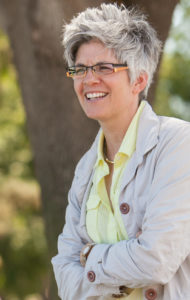
“What Preachers Can Learn from Filmmakers” Part 1 (of 4): Nobody Goes to the Cinema to Read the Screenplay
Introduction to the Series
The cinema has become an important means of cultural communication, a contemporary language in need of understanding and explication . . . Some even believe that cinema studies is positioned to become the new MBA, a means of general preparation for careers in fields as diverse as law and the military.[1]
Although multimedia literacy is not one of the accreditation standards for theological schools (yet!), add theological studies to the diverse fields mentioned in the quote above. As seminary education continues to follow the higher education trend toward online teaching and learning, instructors are recognizing the need to enhance their multimedia literacy. Minimally, it is important to note that many of our students are already literate in the contemporary language of cinema. Many students would agree with the following:
Movies serve not simply as a commodity but as a primary storytelling medium of the twenty-first century, interpreting reality for us, providing us with a common language, and acting as a type of cultural glue.[2]
For many, “image” has replaced “text” as the central tool of communication. This substitution challenges theology’s centrality of the Word (text) and revives a longstanding love/hate relationship between the pious and images. The obstacles are especially palpable for an oral/aural ecclesial practice like preaching. After all, faith comes through hearing (Romans 10:17), not seeing, right?
Despite such challenges, the Reformation spirit asks us theologians to embrace new means of communicating the gospel. Cinematic competency seems to be today’s printing press.
So, in an attempt to meet students where they are (and teach others along the way), I’ve tried to boost my multimedia literacy by becoming a student of the cinema and seeking convergences between filmmaking and homiletics for the purposes of enlivening the preached word, communicating the gospel, and impacting hearers and their/our world.
Part 1: Nobody Goes to the Cinema to Read the Screenplay
Despite numerous obvious differences between the two fields that might render them too dissimilar for comparison (for example, films take years to produce and preachers generally have to squeeze sermon preparation into 6 busy days; films are primarily visual experiences, sermons are primarily aural experiences), preachers have much to learn from filmmakers. In this 4-part blog series, I will propose elements, concepts, and techniques from filmmaking that can serve preachers.
We begin with this week’s reminder: Nobody goes to the cinema to read the screenplay . . . or even to hear it read. In the same way, nobody goes to worship to read a written sermon . . . or even watch the preacher read it. Oh, yes, people in the pews have become accustomed to the latter, but they should expect more from us preachers. You see preaching is inevitably a kind of performance. These two “p” words are often considered to be at odds since preaching is not solely for entertainment or to heighten the performers ego (to be sure, performers in a variety of arts, including film, expect their performances to move beyond these two outcomes as well). However, preaching is a performance in that it “completes, carries out, accomplishes” something, as its Old French etymology suggests (par-fournir). Indeed, preaching brings an experience to life.
T.S. Eliot noted that “Literature was turning blood into ink.” Preaching, on the other hand, turns ink (the written biblical text) into blood; that is, it intends to bring the sacred text to life. Therefore, a sermon is a road map or a blue print for a transformational experience. “Road map” and “blueprint” are often used for screenplays as well. Preachers would do well to consider the following analogy from a screenwriter.
However brilliant, [a screenplay is] always in a state of becoming, forever on the way to being something else—a film. You can admire a cocoon for its marriage of function and form, but ultimately it’s the butterfly that will make its way in the world.[3]
Or, as another puts it, “. . . screenplays don’t really exist until they’re made into movies.”[4] In the same way, one might consider that a written sermon doesn’t really exist until it’s preached.
So, how does this connection to the digital world guide the teaching of preaching? First and foremost, simply making the analogy explicit quickly resonates with preachers-to-be. Therefore, students are challenged to make their “scripts” (yes, I call them scripts) a means to an end, and not the ends themselves. Sermons that pay attention to sermon delivery from the beginning of the writing/crafting process tend to create more of an experience for and with the listeners. Such preaching has more of a chance to turn ink into blood and “make its way in the world.”
[1] Robert K. Johnston, Craig Detweiler, and Kutter Callaway. Deep Focus: Film and Theology in Dialogue, 11.
[2] Deep Focus, 10.
[3] Dan Gurskis. The Short Screenplay: Your Short Film from Concept to Production (Aspiring Filmmaker's Library), Kindle Edition, xii.
[4] Joel Engel, Oscar-Winning Screenwriters on Screenwriting (New York: Hyperion), 2.
Leave a Reply